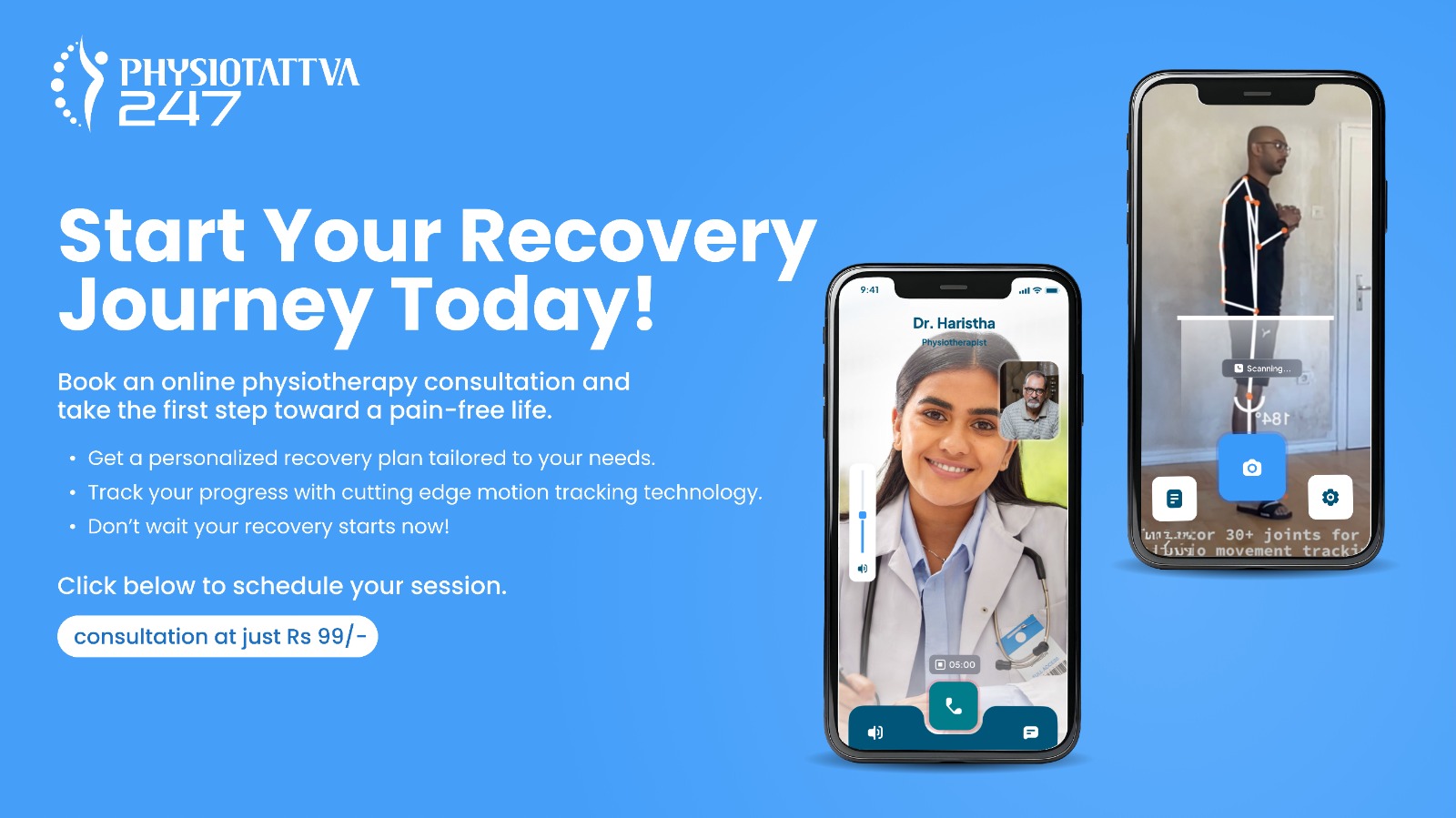Physiotherapy treatment for knee pain
The knee joints articulate four bones: the femur, tibia, fibula, and patella. There are four compartments: The medial and lateral tibia femoral compartments, The femoral patella compartment, and the superior tibiofibular joint. The components of each of these compartments can suffer from repetitive strain, injury, or disease.

TYPES OF KNEE PAIN
● Acute knee pain
● chronic knee pain
Acute knee pain
An acute injury or infection can cause acute knee pain. Chronic knee pain is open by injuries or inflammation (such as arthritis) But can also be caused by infection.
Chronic Knee Pain
Temporary Knee pain is different from chronic knee pain. Many people experience temporary knee pain due to an injury or accident. Chronic knee pain rarely goes away without treatment and is not always attributed to one incident. It’s most often the result of several causes or conditions.
Risk factors:
● Age
● Gender
● BMI
● Occupation
● Family history of OA
● History of the knee injury
Common causes of knee pain
● Osteoarthritis
● Tendinitis
● Tendinitis
● Bursitis
● Gout
● Baker’s cyst
● Dislocation
● Meniscus tear
● Torn ligament
Consultation
If you are experiencing knee pain, you should immediately consult a nearby physiotherapy doctor to get physiotherapy for knee pain. See your doctor and get physiotherapy for knee pain. If you don't, the condition may get worse.
Treatment
Knee pain treatment is a relief method that can help many people with knee pain. Experienced physiotherapists can suggest a range of therapies for knee discomfort. That will enable you to resume your favorite hobbies. The pain relief methods include physical therapy, heat therapy, ice therapy, etc.
● Medication
● injections
● surgery
● physiotherapy
Physiotherapy for knee pain:
Physical therapy can help to reduce pain, swelling, and stiffness of the knee joint. It helps to improve knee joint function. We may find it simpler to walk, bend over, kneel, crouch, and sit as a result.
Physiotherapy treatment:
● Cryotherapy
● physiotherapy
● hydrotherapy
● manual therapy
● electro therapy
● exercise therapy
Cryotherapy: also known as Cold therapy, is the local or general use of low temperature in medical treatment. Cryotherapy is used to treat a variety of tissue damage medically called lesions.
Hydrotherapy is also known as hydropathy and is a water cure. It involves the use of water for pain relief and treatment. The therapeutic purpose is to stimulate blood circulation and treat disease symptoms.
Manual therapy is physical treatment. A physical therapist, physiotherapist, occupational therapist, Chiropractor, or osteopathic physician is used to treat musculoskeletal pain and disability. It primarily includes kneading and manipulation of muscle and joint mobility.
Electrotherapy is the use of electrical energy as a medical treatment. Electrotherapy is used in physical therapy for the relaxation of muscle spasms, prevention, and retardation of disuse atrophy. Increased local blood circulation, muscle rehabilitation, and education of electrical muscle stimulation, maintaining and increasing range of motion.
It is also helpful in managing acute post-traumatic pain and post-surgical acute pain. Immediate post-surgical stimulation of a muscle to prevent venous thrombosis, wound healing, and drug delivery.
These are in the form of TENS, IFT, & UST.
Exercise therapy is a regimen or plan of physical activities designed and prescribed for specific therapeutic goals. Its purpose is to restore normal musculoskeletal function. This treatment helps to reduce pain from injury or disease through neuro-education, gait training, and therapeutic activities.
There are various physical activities in quadriceps, VMO, muscle strengthening, resistance Ex, Assistive exercises, etc.
Rehabilitation at Physio Tattva:
The management has new advances for pain management, muscle strengthening, and restorations of muscle function. Example:
A pulsed electromagnetic field (PEMF): Therapy is a safe and non-invasive way to reduce pain and inflammation. Magnet therapy for knee pain helps to relieve pain.
A Super inductive system (SIS) is the healing effect of a high-intensity electromagnetic field. It represents a treatment of the painful conditions of the joint, and skeletal system. Ingenious applicator construction allows therapy delivery without requiring direct skin contact and with patient and therapist comfort in mind.
Laser therapy is light amplification by stimulated emission of radiation. It affects connective tissue cells, accelerates connective tissue repair, and acts as an anti-inflammatory agent. Laser wavelengths, ranging from 632 to 904 nm, are used to treat musculoskeletal disorders.
Conclusion
Physiotherapy for knee pain is a great way to treat the problem. It is ideal for people who suffer knee pain and want to avoid surgery. It is a good option for those who have had surgery and want to avoid further surgery. With physiotherapy for knee pain treatment options, people can be back to doing what they love in no time.
“MOVING ISN’T IMPORTANT UNTIL YOU CAN’T.”
FAQ's
1. How effective is plasma therapy for knee pain?
Studies on PRP for knees have revealed that some forms of the therapy may successfully treat low- to moderate-grade knee osteoarthritis. Injections of platelet-rich plasma considerably decreased pain, according to several studies.
2. Does laser therapy work well for knee pain?
Cold laser therapy has been demonstrated to reduce mild to moderate OA knee pain and enhance joint flexibility and sensitivity to pressure.





.webp)
.webp)

-min.webp)

